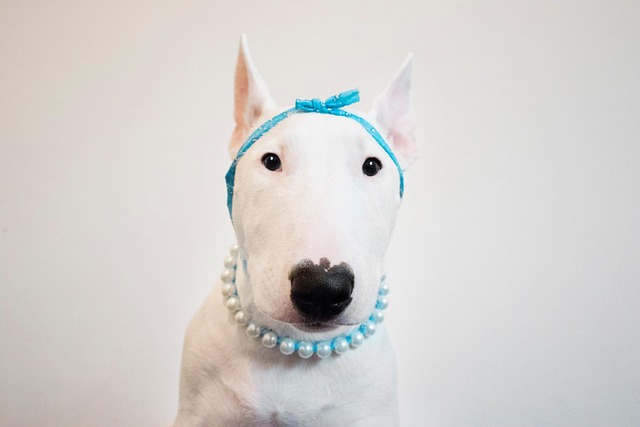
How do i train my dog to be obedient?
Watching your dog dart across the park ignoring your calls isn’t just frustrating—it can put them at risk near busy streets or public spaces.
Teaching a dog to defecate in a fixed place not only keeps the home clean and tidy but also serves as an important foundation for the owner to build trust with the dog and enjoy life. I will combine scientific dog training theories with warm pet-raising experiences to tell you how to guide your dog to find its "exclusive restroom."
Before training a dog to defecate in a fixed place, we need to understand their physiological patterns and behavioral logic first. Just like humans, dogs have innate survival instincts, including the natural tendency to find a fixed place to excrete in order to keep their den clean. The bladder and intestines of puppies are not fully developed, and they may need to excrete every 1 to 2 hours. As they grow older, adult dogs can generally extend the interval to 4 to 6 hours. When you notice that your dog starts to sniff the ground with its head down, circle around in place, or appears restless, these are all signs that it is about to defecate, and timely guidance at this moment is particularly crucial.
Choosing the right defecation area is the first step in training. This area should be quiet, well-ventilated, and far away from the dog's resting and eating places to avoid confusing them. You can choose the bathroom, balcony, or a fixed corner outdoors according to your living environment. If you are training indoors, it is recommended to use pet pee pads or special toilets. The special attracting agents on the surface of the pee pads can attract the dog to go there voluntarily, and the grid design of the pet toilet makes it easy to clean up the urine. If you choose outdoor training, plan a fixed outing route for the dog and take it to the same place each time to help it form a spatial memory.

During the training process, patience and positive reinforcement are the keys to opening the dog's heart. When the dog defecates in the correct area, immediately give enthusiastic verbal praise, such as "Good boy" or "Great job," and at the same time, offer a snack as a reward, so that it can establish a connection between the defecation behavior and a pleasant feeling. If the dog makes a mistake, never scold or beat it afterward because the dog cannot understand the connection between the punishment and the wrong behavior that occurred a few minutes ago. Instead, it will feel fear and unease. The correct way is to clean it up silently and use a pet-specific deodorant to completely eliminate the smell to prevent the residual pheromones from misleading the dog to defecate there again.
Establishing a regular daily routine is the key to consolidating the training results. Feeding, walking, and guiding the dog to defecate at fixed times every day can help the dog form a biological clock. For example, after getting up in the morning, 15 to 30 minutes after a meal, after playing, and before going to bed are all golden times to guide the dog to defecate. After taking the dog to the designated area, wait quietly and avoid distracting it. If the dog successfully defecates, give a reward immediately; if not, don't force it. After waiting for 10 to 15 minutes, take it away and try again later.
During the training process, various challenges are inevitable. Some dogs may resist the new defecation area. In this case, you can try placing a tissue stained with the dog's urine or feces at the designated location and use the smell to guide it. For sensitive dogs, the training needs to be carried out more slowly. Gradually increase the stay time to reduce their anxiety. In addition, factors such as seasonal changes, moving to a new home, or changes in family members may also cause the dog's defecation behavior to regress. This is a normal phenomenon, and the owner needs to maintain a peaceful mindset and strengthen the guidance again.
When the dog finally learns to defecate in a fixed place, the sense of accomplishment will make all the efforts worthwhile. This process is not only about shaping the dog's behavior but also a deep emotional communication between the owner and the dog. Through patient guidance, we teach the dog to understand human life rules, and the dog responds to every bit of the owner's care with its trust and dependence. From chaos to order, from groping to tacit understanding, every successful defecation training silently tells a warm story between humans and pets, making our lives more harmonious and beautiful.

Watching your dog dart across the park ignoring your calls isn’t just frustrating—it can put them at risk near busy streets or public spaces.

New puppy owners often find themselves rushing to clean up accidents before they set in, and that’s where puppy pad training becomes a game-changer.

If you've noticed your dog's waistline disappearing and your veterinarian has mentioned those few extra pounds, your first instinct might be to simply reduce the amount of food in their bowl.

Training a dog to use a designated spot indoors isn’t as daunting as many new owners fear, but it does take consistency and an understanding of your pet’s needs.

That moment of dread on a walk is all too familiar for many new dog owners. You see another dog approaching down the sidewalk of your neighborhood

If the sight of another dog on your neighborhood walk makes your heart sink as your own dog erupts into a frenzy of barking and lunging, you're not alone.